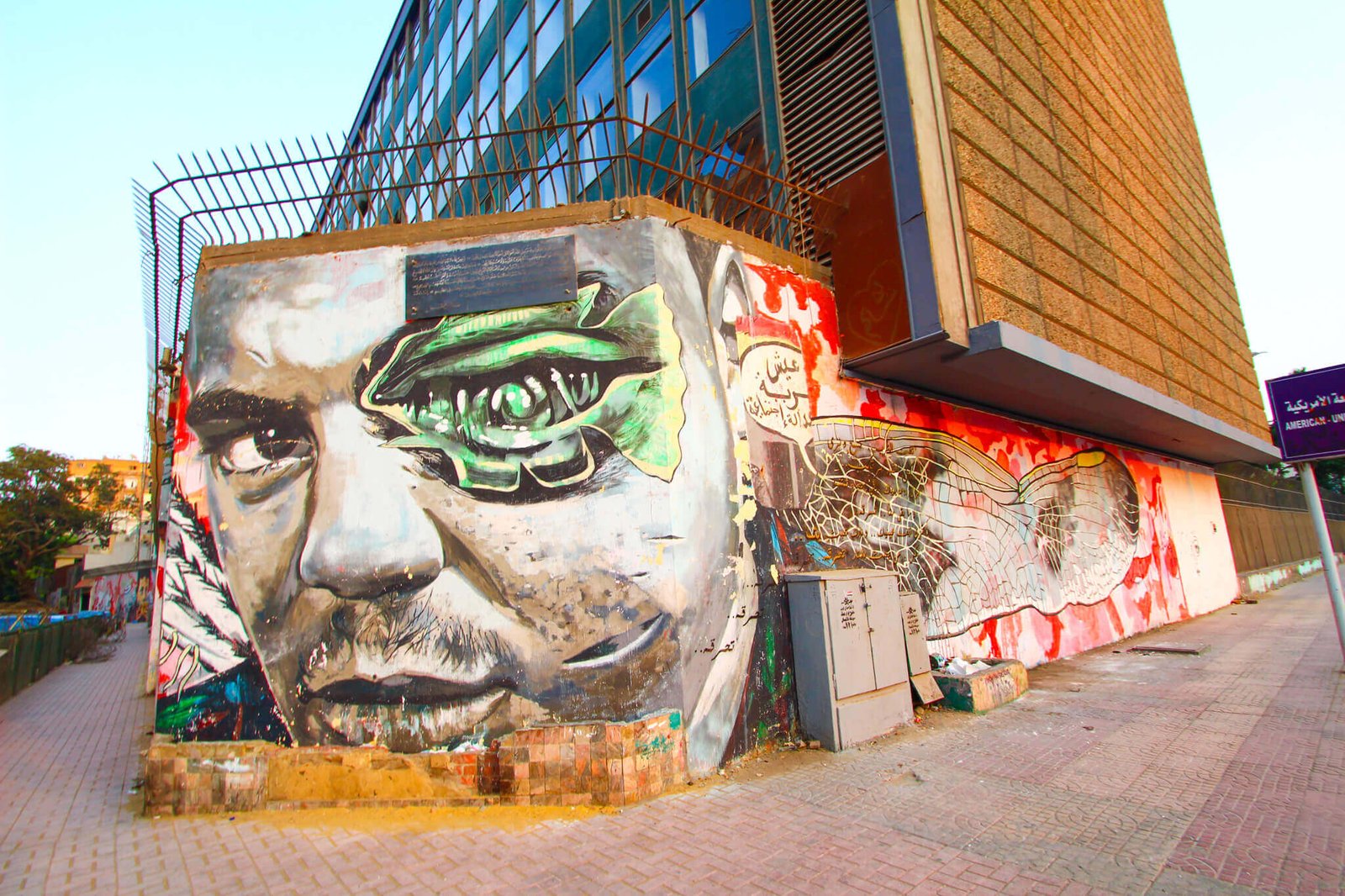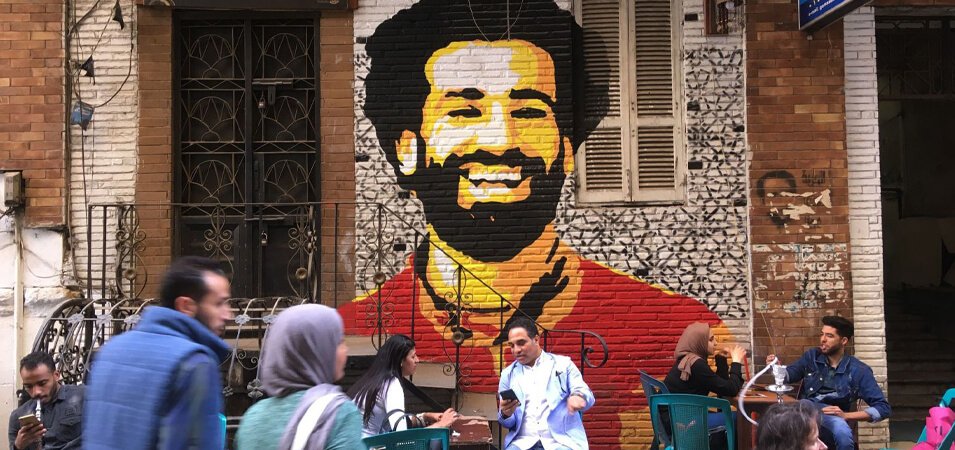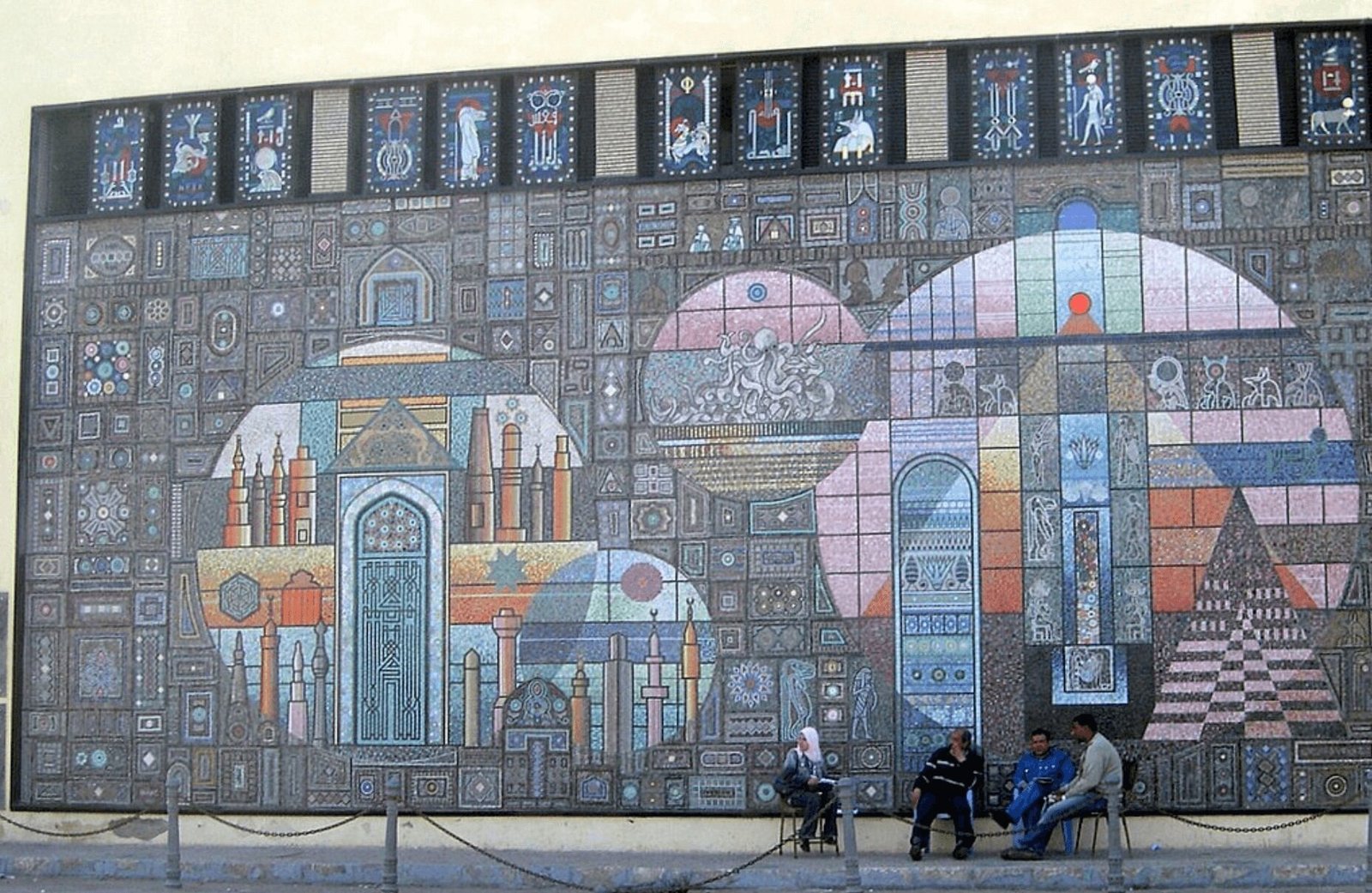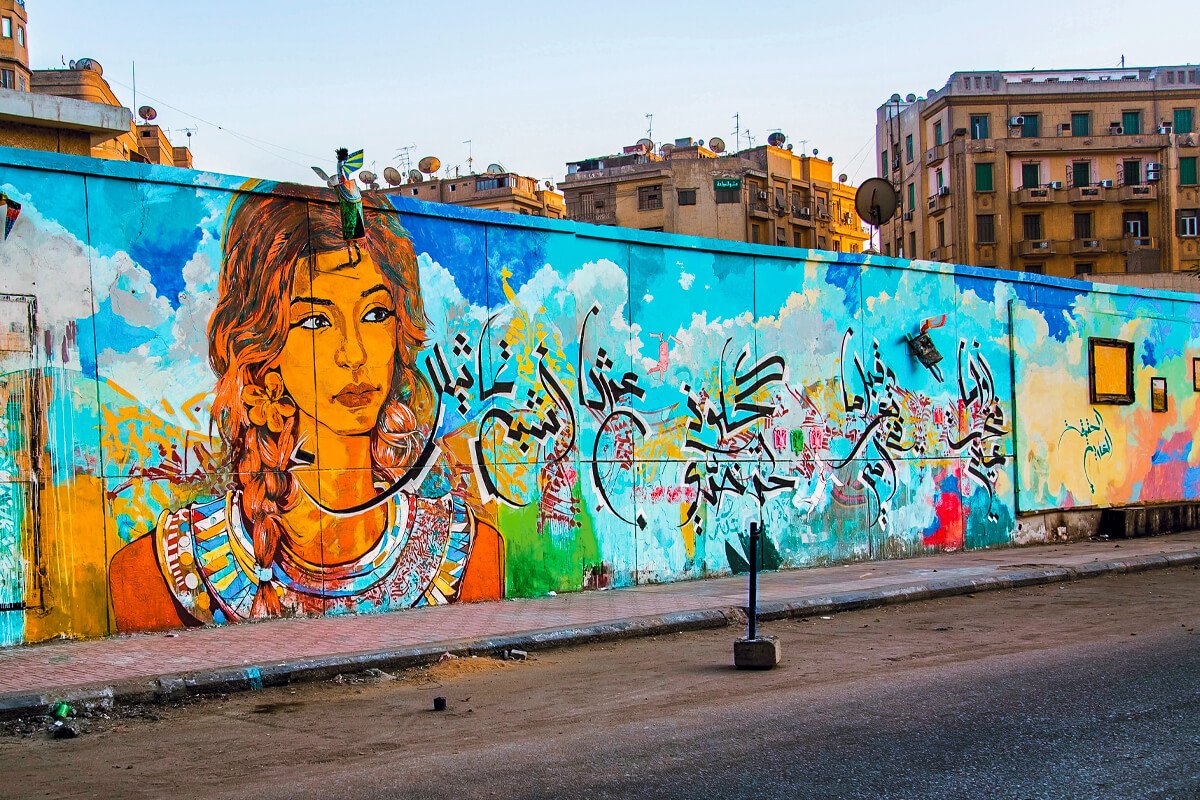Introduction
Cairo‘s walls speak in vibrant colors, telling stories of revolution, hope, and social transformation through bold brushstrokes and spray-painted dreams. The Cairo street art scene exploded after Egypt’s 2011 revolution, transforming ordinary buildings into canvases for political expression and artistic rebellion.
Ancient hieroglyphs now share space with modern calligraffiti, while stencil activism covers walls once reserved for government propaganda.
From Downtown’s revolutionary murals demanding justice to Zamalek’s sophisticated gallery-district pieces, the city’s urban art reflects Egypt’s complex social fabric. Similarly, Manshiyat Naser’s collaborative projects demonstrate how art transcends economic boundaries, creating beauty in unexpected places.
Whether you seek Instagram-worthy backdrops or deeper understanding of Egyptian youth culture, Cairo’s street art offers visual narratives that capture the nation’s pulse more authentically than any museum exhibition.
Downtown Cairo’s Revolutionary Murals: Where Politics Meets Paint

Downtown’s crumbling colonial buildings provide dramatic backdrops for Egypt’s most politically charged street art. These murals transform everyday commutes into gallery walks through recent history.
The area around Tahrir Square features layers of political commentary dating from 2011 to present day. Moreover, new pieces appear regularly, creating an ever-evolving outdoor museum of social consciousness.
- Iconic piece: The “Blue Girl” mural on Falaki Street depicting feminine strength
- Best viewing time: Early morning light illuminates detailed political messaging
- Artist collaboration: Local and international artists work together on large walls
- Photography tip: Use wide-angle lenses to capture full building-sized compositions
Artist Spotlight: Ammar Abo Bakr creates powerful stencil activism pieces addressing social inequality throughout Downtown’s side streets.
Conversely, some revolutionary murals have been painted over by authorities, creating palimpsests where ghost images peek through newer layers. Hear the rattle of spray cans echoing through back alleys as artists work under cover of darkness.
Zamalek’s Gallery District Street Art: Sophisticated Urban Canvas
Cairo’s upscale Zamalek island hosts a more refined street art scene, where gallery aesthetics meet urban expression. These pieces often complement nearby traditional art spaces.
The narrow streets between galleries feature commissioned murals that blur lines between street art and fine art. Furthermore, property owners actively collaborate with artists, creating sanctioned public art projects.
- Signature style: Abstract geometric patterns incorporating Islamic design elements
- Gallery connection: Street pieces often preview upcoming gallery exhibitions
- Cultural fusion: Arabic calligraphy merged with contemporary graffiti techniques
- Upscale audience: Art collectors and tourists frequent these pedestrian-friendly streets
Artist Spotlight: Bahia Shehab pioneered Arabic calligraffiti, transforming traditional scripts into contemporary protest art throughout Zamalek’s walls.
The area’s tree-lined streets create natural frames for outdoor artworks. Meanwhile, café terraces offer perfect vantage points for appreciating large-scale murals while sipping traditional ahwa.
Dokki’s Underground Tunnel Art: Hidden Urban Gallery
The pedestrian tunnels connecting Dokki’s busy intersections house Cairo’s most unexpected street art collections. These underground spaces offer protection from weather and authorities.
Artists utilize the tunnels’ unique acoustics and lighting conditions to create immersive experiences. Furthermore, the constant foot traffic ensures high visibility for artistic messages.
- Unique features: Sound-responsive installations activated by footsteps and conversations
- Safety considerations: Well-lit tunnels with security cameras provide safe viewing
- Rotating exhibitions: Monthly themes organized by local artist collectives
- Interactive elements: QR codes link physical art to digital artist portfolios
Artist Spotlight: Aya Tarek creates wheatpaste posters featuring female empowerment messages throughout the tunnel network.
The underground environment creates natural spotlighting effects for certain pieces. Conversely, some artworks deliberately play with shadows and darkness to enhance their mysterious appeal.
Heliopolis’ Legal Murals: Sanctioned Street Art

This affluent district showcases officially commissioned street art adorning building walls with property owner permission. These legal murals demonstrate street art’s mainstream acceptance.
The neighborhood’s wide boulevards and art deco architecture provide elegant backdrops for sophisticated urban art installations. Moreover, local businesses sponsor artists to beautify their commercial properties.
- Architectural harmony: Murals complement 1920s art deco building facades
- Business partnerships: Cafés and shops commission artists for branded wall art
- Cultural themes: Pharaonic motifs mixed with contemporary Egyptian identity
- Maintenance support: Property owners regularly clean and preserve commissioned works
Artist Spotlight: Ganzeer creates politically subtle murals that navigate censorship while delivering social commentary through symbolic imagery.
The district’s planned layout makes self-guided art walks particularly enjoyable. Meanwhile, outdoor café seating provides comfortable spots for sketching and photographing urban artworks.
Nasr City’s Stencil Underground: Quick Art, Deep Messages
This sprawling residential district hosts Cairo’s most prolific stencil activism scene, where artists create rapid-fire political and social commentary.
Small stencils appear overnight on utility boxes, construction barriers, and building corners throughout the neighborhood. Furthermore, the stencil format allows artists to replicate messages across multiple locations quickly.
- Signature style: Black and white stencils with red accent colors
- Political themes: Social justice, economic inequality, and government criticism
- Replication strategy: Same designs appear simultaneously across distant neighborhoods
- Guerrilla timing: Most stenciling occurs between 2-5 AM to avoid detection
Artist Spotlight: The mysterious “Alf” (Arabic for 1000) creates minimalist stencils addressing urban poverty throughout Nasr City.
The stencils’ small scale encourages close examination of detailed messages. Similarly, their temporary nature creates urgency among photographers seeking to document ephemeral art.
Shubra’s Community Projects: Neighborhood Pride in Paint
This working-class district demonstrates how street art strengthens community bonds through collaborative mural projects celebrating local culture and history.
Residents actively participate in planning and creating murals that reflect their neighborhood’s character and aspirations. Furthermore, these projects often coincide with community improvement initiatives.
- Community input: Residents vote on mural themes and participate in painting
- Cultural celebration: Murals honor local musicians, athletes, and community leaders
- Youth engagement: Teenager training programs teach artistic skills and civic pride
- Maintenance tradition: Annual community painting days refresh and update murals
Artist Spotlight: Sad Panda leads community workshops combining traditional Islamic geometric patterns with contemporary urban art techniques.
The collaborative process creates stronger emotional connections between residents and their neighborhood art. Meanwhile, visiting these community projects offers authentic cultural exchange opportunities.
Road 90 Parking Lot Installations: Car Culture Canvas
New Cairo’s modern infrastructure includes designated spaces for large-scale street art installations in parking areas and underpasses.
These planned artistic spaces accommodate ambitious projects impossible in dense urban areas. Moreover, the installations serve as landmarks helping navigation in New Cairo’s sprawling layout.
- Scale advantage: Large walls accommodate building-sized murals and installations
- Planned integration: Architects design buildings with future street art in mind
- Automotive themes: Car culture and urban mobility feature in many pieces
- Contemporary techniques: Digital projection mapping combined with traditional painting
Artist Spotlight: The collective “Wall Talk” creates narrative murals telling stories across multiple parking structure levels.
The modern setting allows experimentation with new materials and techniques. Similarly, adequate lighting systems ensure 24-hour visibility for these ambitious artistic installations.
Islamic Cairo’s Calligraffiti: Sacred Scripts Meet Street Style
The historic Islamic district hosts unique fusion art combining traditional Arabic calligraphy with contemporary graffiti aesthetics. These pieces honor religious heritage while embracing modern expression.
Master calligraphers collaborate with street artists to create respectful interpretations of sacred texts and cultural poetry. Furthermore, these works demonstrate how tradition adapts to contemporary artistic movements.
- Religious sensitivity: All Arabic text receives approval from Islamic scholars
- Technique fusion: Traditional reed pens combined with spray paint applications
- Cultural bridge: Ancient scripts presented through youth-friendly artistic styles
- Educational value: Passersby learn classical Arabic poetry through street art
Artist Spotlight: Khaled Hafez integrates pharaonic hieroglyphs with Arabic calligraphy, creating multi-temporal artistic narratives.
The juxtaposition of medieval architecture with contemporary art creates striking visual contrasts. Notably, tourists photograph these pieces to capture Cairo’s cultural continuity across centuries.
Nile Corniche Underpass Art: River Views and Urban Expression
The pedestrian underpasses along the Nile Corniche feature murals celebrating Cairo’s relationship with its life-giving river.
These climate-controlled spaces protect artworks from harsh desert conditions while providing relief for pedestrians crossing busy waterfront roads. Moreover, the river proximity inspires aquatic and nautical themes.
- Thematic consistency: Water, boats, and river life dominate artistic themes
- Climate protection: Underground location preserves murals from sandstorms
- Tourist accessibility: Central location attracts international visitors
- Lighting design: LED systems highlight artworks during evening Corniche walks
Artist Spotlight: Aalam Wassef creates flowing murals mimicking Nile currents and incorporating traditional boat-building imagery.
The underpasses connect major tourist attractions, ensuring high visibility for featured artworks. Similarly, the Nile setting provides peaceful contemplation spaces for appreciating urban creativity.
Maadi’s Expat-Friendly Street Art: International Artistic Exchange
This suburban district popular with expatriates hosts bilingual street art reflecting Cairo’s international community.
English and Arabic text combinations make these artworks accessible to diverse audiences. Furthermore, international artists collaborate with Egyptian counterparts, creating cross-cultural artistic dialogue.
- Language diversity: Bilingual and trilingual murals accommodate international residents
- Cultural fusion: Western pop culture references mixed with Egyptian imagery
- Residential integration: House owners commission artists for garden walls and gates
- Family themes: Child-friendly imagery reflects the area’s family-oriented demographics
Artist Spotlight: The duo “East Meets West” creates murals exploring cultural identity themes relevant to expatriate experiences.
The tree-lined streets and villa architecture provide intimate settings for smaller-scale artistic works. Meanwhile, local cafés display indoor exhibitions by the same artists creating outdoor murals.
Conclusion: Your Cairo Street Art Adventure

Cairo’s most photogenic street art locations—Downtown’s revolutionary murals, Mohamed Mahmoud Street’s memorial gallery, and Zamalek’s sophisticated urban canvases—offer unparalleled insights into Egyptian social consciousness and artistic innovation. These Cairo street art tour destinations showcase how contemporary artists transform urban landscapes into powerful storytelling mediums.
Remember to respect residential areas and avoid photographing people without permission. Many murals commemorate sensitive political events or personal tragedies requiring respectful viewing approaches.
Check out our other articles:

